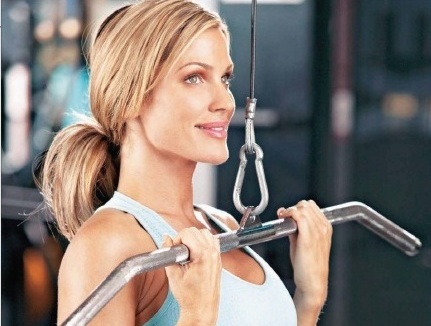Exercise Speed
The directions for many of the exercises call for them to be done slowly, making the muscles work harder. There is, however, some benefit – primarily aerobic or cardiovascular-to doing them rapidly. We suggest doing the exercises slowly most of the time, varying the regimen occasionally by doing them at a moderate or rapid speed. You might do all your exercises rapidly on a given day each week, or do some slowly and others rapidly each day you exercise. Mix it up.
You should be careful not to alter the movements of an exercise when increasing or decreasing its speed. The correct form is always essential. Move immediately from one exercise to the next, resting only as little as necessary between them. As your proficiency increases you might want to use some weights, or have someone provide some resistance to your movements.
Vigorous Exercises
In addition to doing several warm-ups and a number of regular exercises, include one or two (or more) vigorous exercises near the end of each workout session. Depending on your condition, work your way, day by day, through the vigorous exercises that you are able to do. Add others as your conditioning improves. Three of the best exercises for the hips, buttocks, thighs, and most other parts of the body are running, bicycling (regular or stationary), and swimming. If possible, incorporate one or more of these activities into your regular exercise schedule. Climbing stairs is also good exercise.
If you plan to run, read at least one of the many books now available on the subject, and be sure to buy a good pair of shoes. It does not pay to try to save a few dollars by buying inadequately designed shoes. Run with someone else if you can, but don’t try to keep up with the pace of a seasoned runner. It can discourage you very quickly.
If you bicycle, be sure to work hard at it. Many people deceive themselves into thinking they are getting a good workout when they are barely going fast enough to balance. Some physical fitness experts think swimming is as beneficial as, or even better than, running. If you plan to do a lot of it, consider wearing plugs to protect against ear infections, goggles to protect the eyes from chlorine, and a cap to keep your hair from turning into green straw.
Exercise Precautions
The first few times you do these exercises you should expect some sore muscles, even if you are in good condition. After a few workouts this should stop. Soreness is not all bad; it lets you know that you are working some muscles that had not been reached before.
Exercise sessions should not be continued if injury or strain occurs. If a great deal of muscle soreness exists, try a few days of static stretching instead of more vigorous exercises. Resume your regular exercise program as soon as the soreness subsides. Listen to your body. Learn to tell the difference between the soreness that indicates progress and the pain that denotes exhaustion or injury.
A vigorous exercise program should not be started during pregnancy.
If such a program is already under way, however, it need not necessarily be stopped. Consult your physician. He or she may encourage an exercise program that will be compatible, or nearly so, with your present one. (Remember what we said about checking with your doctor first. If an overweight doctor recommends against exercising, get a second opinion. But don’t put it off. Whipping yourself into shape may be one of the smartest things you’ve ever done.)

